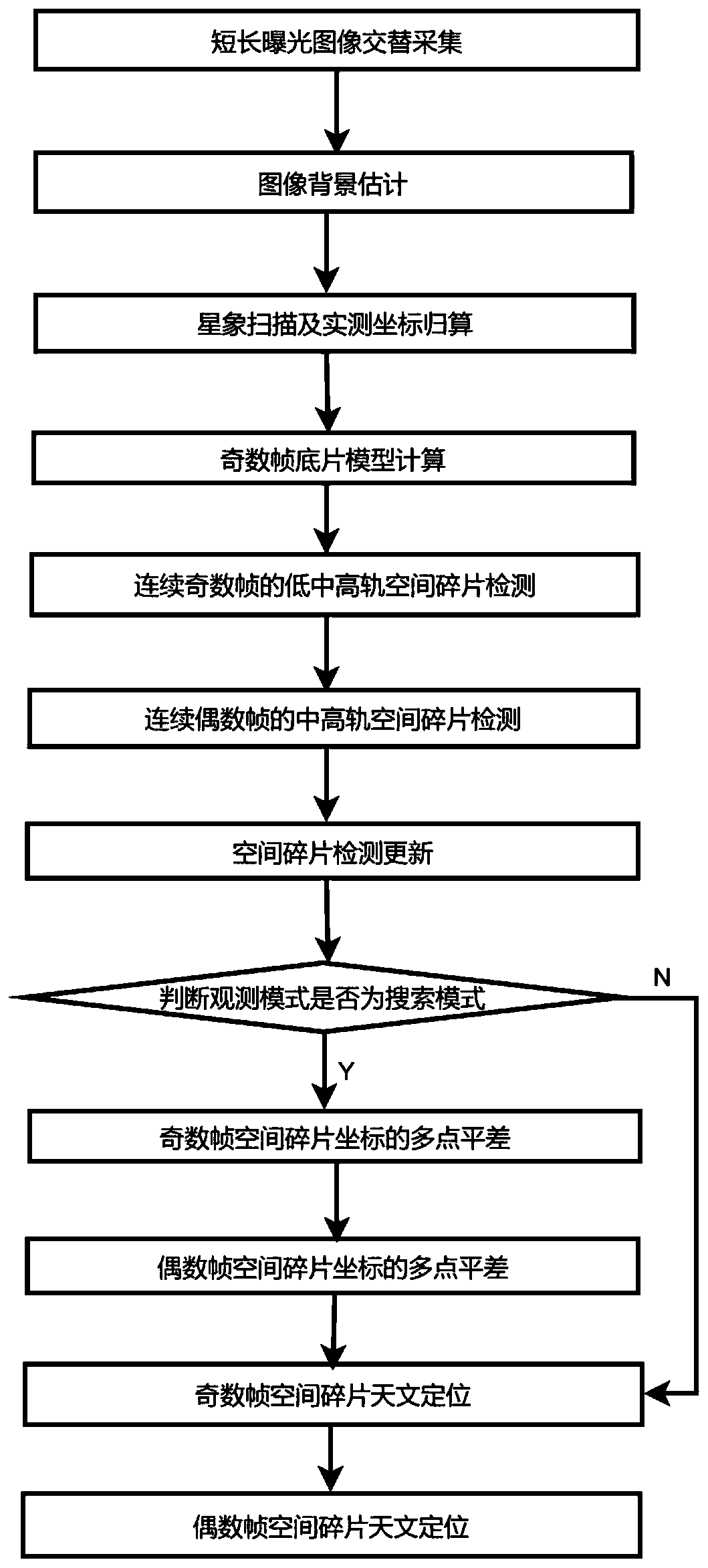Space debris observation method based on alternating of different exposure times of CCD camera
A space debris and exposure time technology, which is used in measurement devices, computer parts, and material analysis by optical means, can solve the problems of high-orbit space debris detection failure, low-orbit space debris detection failure, and astronomical positioning failure.
- Summary
- Abstract
- Description
- Claims
- Application Information
AI Technical Summary
Problems solved by technology
Method used
Image
Examples
specific Embodiment 1
[0061] For the convenience of description, the observation method mentioned in the present invention will be described below by taking the long and short light exposure durations as examples.
[0062] combine figure 1 , the present invention refers to a space debris observation method based on the alternation of different exposure times of a CCD camera, the observation method comprising the following steps:
[0063] S1: Use the CCD camera to alternately collect (2n+1) frames of images including space debris and background stars in the designated area according to the preset first exposure time and second exposure time, where the first exposure time is used to collect odd-numbered frames of images, using The second exposure duration collects images of even frames, and the first exposure duration is shorter than the second exposure duration; the n is a positive integer greater than or equal to 3.
[0064] S2: Estimate the image background.
[0065] S3: According to the estimat...
specific Embodiment 2
[0120] When the CCD camera adopts long and short exposure alternate exposure, the first frame image can be discarded, so that the new first frame image is still a short exposure image, and the space debris observation method based on the alternate exposure time of the CCD camera as mentioned above is used to detect The acquired images are processed. Except for the discarded first frame of images, it is better to acquire more than 7 other images.
specific Embodiment 3
[0122] Under the premise of high camera frame rate, short-medium-long alternating or long-medium-short alternating exposure can also be used. At this time, there are three image frame groups with different exposure times, and the three groups of image frames have different effects on space debris in different orbits. Observation efficiency, using the aforementioned space debris observation method based on alternating exposure time of the CCD camera to observe the three sets of image frames acquired, in order to obtain more accurate observation results.
[0123] In other examples, it can be further extended to obtain multiple image frame groups by setting more than three exposure durations, and analyze them one by one to obtain more accurate observation results.
[0124] Aspects of the invention are described in this disclosure with reference to the accompanying drawings, which show a number of illustrated embodiments. Embodiments of the present disclosure are not necessarily d...
PUM
 Login to View More
Login to View More Abstract
Description
Claims
Application Information
 Login to View More
Login to View More - R&D
- Intellectual Property
- Life Sciences
- Materials
- Tech Scout
- Unparalleled Data Quality
- Higher Quality Content
- 60% Fewer Hallucinations
Browse by: Latest US Patents, China's latest patents, Technical Efficacy Thesaurus, Application Domain, Technology Topic, Popular Technical Reports.
© 2025 PatSnap. All rights reserved.Legal|Privacy policy|Modern Slavery Act Transparency Statement|Sitemap|About US| Contact US: help@patsnap.com



